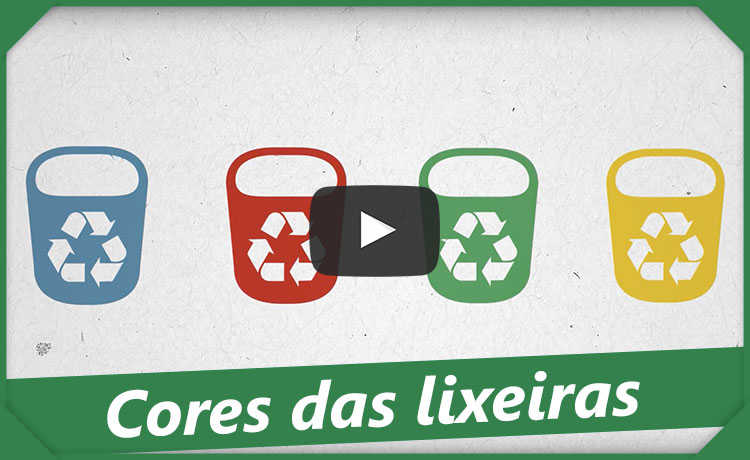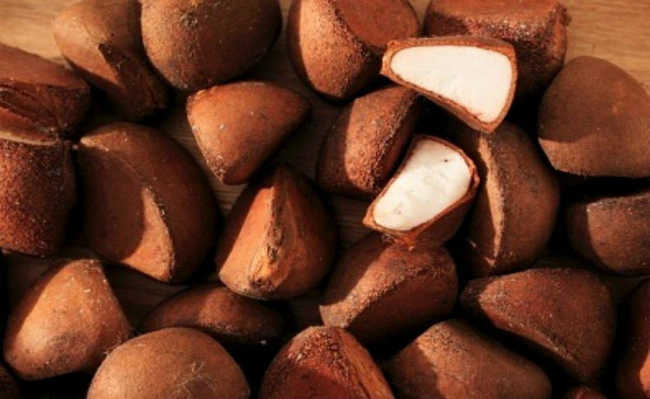The Top Seven Foods That Cause Pimples
Learn about the foods that cause pimples and start skin care through diet

Edited and resized image by Brian Suman is available on Unsplash
Knowing the foods that cause pimples is an important step in starting effective skin care.
pimples and food
Pimples, also called acne, are a common skin condition that affects almost 10% of the world's population (see study about it here: 1). The factors that contribute to the appearance of this condition are usually the production of sebum and keratin, bacteria, hormones, blocked pores and inflammation (see study about it here:2). The link between the consumption of certain foods and the appearance of pimples is controversial. However, studies have shown that there are some foods that cause pimples. If you have this chart, check out a list of the top seven foods that cause pimples and eliminate (or reduce) them from your menu:
1. Refined grains and sugars
People who have pimples tend to consume more refined carbohydrates than people with little or no acne (see study on this: 4, 5). These foods rich in refined carbohydrates include:
- Bread, biscuits, cereals or desserts made from white flour;
- Pasta made with white flour;
- White rice and rice noodles;
- soft drinks and other sugary drinks;
- Sweeteners like cane sugar, maple syrup, honey or agave.
One study found that people who consumed white sugar frequently had a 30% higher risk of developing pimples, and those who consumed sweets and cakes less frequently had a 20% higher risk. This risk can be explained by the effects that refined carbohydrates have on blood sugar and insulin levels.
Refined carbohydrates are quickly absorbed into the bloodstream, which raises blood sugar levels very quickly. When blood sugars rise, insulin levels also rise to help transport these sugars out of the bloodstream and into cells. However, high insulin levels are not good for people with pimples.
- What is the Glycemic Index?
- Carbs: bad guys or good guys?
Insulin makes androgen hormones more active and increases insulin-like growth factor 1 (IGF-1). This contributes to the development of pimples, making the skin cells grow faster and increasing the production of sebum (see studies about it here: 7, 8, 9).
- How to replace regular bread with seven amazing tips
On the other hand, diets with a low glycemic index, which do not dramatically increase blood sugar or insulin levels, are associated with a reduction in the severity of pimples (see studies on this: 10, 11, 12).
2. Dairy products
Studies have found a link between dairy foods and pimple severity in teenagers (see studies here: 13, 14, 15, 16). In addition to these, two other studies found that young adults who regularly consumed milk or ice cream were four times more likely to have pimples (see studies on this: 17, 18).
It is known that milk increases insulin levels, regardless of its effects on blood sugar, which can worsen the severity of acne (see studies on this: 19, 20, 21). Cow's milk also contains amino acids that stimulate the liver to produce more IGF-1, which has been linked to the development of acne (see studies on this: 22, 23, 24).
While there is speculation as to why milk consumption might make pimples worse, it's not clear whether dairy has a direct role. More research is needed to determine if there is a specific amount or type of dairy that can cause pimples.
- How to replace milk with nine tips
3. Fast Food
Acne is strongly associated with eating a Western-style diet rich in calories, fat and refined carbohydrates (see studies on this: 25, 26). Fast food foods such as hamburgers, hot dogs, French fries and soda can increase your risk of acne.
- What is big food and alternatives
A study of more than 5,000 Chinese teens and young adults found that high-fat diets were associated with a 43% higher risk of developing pimples. Regular intake of fast food increased the risk by 17%.
A study of 2,300 Turkish men found that frequent consumption of hamburgers or sausages was associated with a 24% higher risk of developing acne.
It's not clear why eating fast food can increase the risk of developing pimples, but some researchers suggest it can affect gene expression and alter hormone levels in ways that promote acne development (see studies on this: 28, 29, 30).
However, it is important to note that most research on fast food and acne used self-reported data. This type of research only shows patterns of eating habits and acne risk and does not prove that fast food causes acne. Thus, more research is needed.
4. Foods high in omega-6 fats
Diets containing large amounts of omega-6 fatty acids, like the typical Western diet, have been associated with increased levels of inflammation and acne (see studies about it here: 7, 31). This is because Western diets contain large amounts of corn and soybean oils, which are rich in omega-6 fats, and few foods that contain omega-3 fats, such as fish and nuts (32, 33).
This imbalance of omega-6 and omega-3 fatty acids puts the body in an inflammatory state, which can worsen the severity of pimples (see studies about it here: 34, 35). On the other hand, supplementation with omega-3 fatty acids can reduce levels of inflammation and, it has been found, also reduces the severity of pimples (see study here: 36).
- Foods rich in omega 3, 6 and 9: examples and benefits
- Too much omega 3 can be harmful
5. Chocolate
Chocolate has been suspected of triggering acne since the 1920s, but so far no consensus has been reached (see study about it here: 37). Several informal researches have associated chocolate consumption with a higher risk of developing pimples, but this is not enough to prove that chocolate causes acne (see studies about it here:(38, 39).
A more recent study found that acne-prone men who consumed 25 grams of 99% dark chocolate daily had an increased number of acne lesions after just two weeks. Another study found that men who received 100% cocoa powder capsules daily had significantly more acne after a week compared to those who received a placebo.
It's not clear exactly why chocolate can increase acne, although one study found that eating chocolate increased the immune system's reactivity to acne-causing bacteria, which may help explain these findings (see study on this: 42) . While recent research supports a link between chocolate consumption and acne, it is still unclear whether chocolate actually causes acne.
6. Whey protein powder
Whey protein is a popular dietary supplement (see studies on this here: 43, 44). It is a rich source of the amino acids leucine and glutamine. These amino acids make skin cells grow and divide more quickly, which can contribute to the formation of acne (see studies on this here:45, 46).
The amino acids in whey protein can also stimulate the body to produce higher levels of insulin, which has been linked to the development of acne (see studies here: 47, 48, 49). Several case studies have reported a link between whey protein consumption and acne in male athletes (see studies about it here: 50, 51, 52).
- What are amino acids and what are they for
Another study found a direct correlation between acne severity and the number of days on whey protein supplements.
7. Foods you are sensitive to
Acne is, at its root, an inflammatory disease (see studies about it here: 54, 55). That's why anti-inflammatory drugs, such as corticosteroids, are effective treatments for severe acne and that people with acne have high levels of inflammatory molecules in their blood (see studies on this: 56, 57, 58).
- 16 foods that are natural anti-inflammatory
One way in which food can contribute to inflammation is through food sensitivities, also known as delayed hypersensitivity reactions (see study on this here: 59).
Food sensitivities occur when the immune system misidentifies food as a threat and initiates an immune attack against it (see study on this: 60). This results in high levels of pro-inflammatory molecules circulating throughout the body, which can cause pimples (see study on this: 61).
Because there are so many foods that your immune system can respond to, the best way to discover their unique triggers is to go on an elimination diet under the supervision of a nutritionist. Elimination diets work by temporarily restricting a number from your diet in order to eliminate triggers and get symptom relief by systematically adding foods back by tracking your symptoms and looking for patterns.
Food sensitivity tests such as can help determine which foods lead to immune-related inflammation and provide a clearer starting point for your elimination diet (see study on this: 62). While there appears to be a link between inflammation and pimples, no studies have directly investigated the specific role of food sensitivities in their development.
What to eat
Now that you know what foods cause pimples, check out a list of foods that can help you get rid of them:
- Omega-3 fatty acids: omega-3s are anti-inflammatory and regular consumption has been associated with a reduced risk of developing pimples (see study on this: 64, 65, 66);
- Probiotics: Probiotics promote a healthy gut and a balanced microbiome, which is related to reduced inflammation and a lower risk of developing acne (see related studies here: 67, 68, 69, 70);
- Green tea: Green tea contains polyphenols that are associated with reduced inflammation and reduced sebum production. Green tea extracts have been found to reduce the severity of acne when applied to the skin (see studies on this: 71, 72, 73, 74);
- Turmeric: Turmeric contains the anti-inflammatory polyphenol curcumin, which can help regulate blood sugar, improve insulin sensitivity, and inhibit the growth of acne-causing bacteria that can reduce acne (see studies on this: 75, 76);
- Vitamins A, D, E and zinc: these nutrients play crucial roles in skin and immune health and can help prevent acne (see studies on this here: 77, 78, 79);
- Paleolithic-style diets: Paleo diets are high in lean meats, fruits, vegetables and nuts and low in grains, dairy products and legumes. They have been associated with lower blood sugar and insulin levels (see study on this: 80);
- Mediterranean-style diets: A Mediterranean diet is high in fruits, vegetables, whole grains, legumes, fish and oil and low in dairy products and saturated fats. They were also associated with reduced acne severity (see studies about it here: 81).










